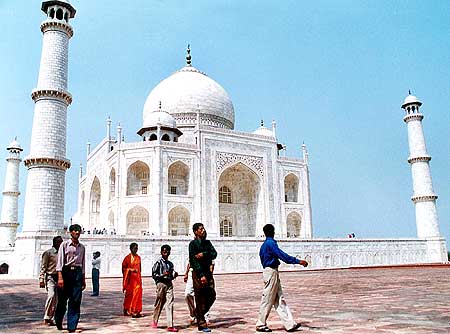 The iconic Taj Mahal, which finds its place among the seven wonders of the world, is set to receive a 'mud-pack treatment' to restore the natural sheen of the white marble which is yellowing due to high pollution level.
The iconic Taj Mahal, which finds its place among the seven wonders of the world, is set to receive a 'mud-pack treatment' to restore the natural sheen of the white marble which is yellowing due to high pollution level.
"Due to increasing pollution in the city, the white marble is yellowing and is losing its sheen. To restore the natural look of the monument the chemical wing of the ASI has started preparations for a mud-pack treatment," Superintending Archaeologist of ASI B M Bhatnagar told PTI.
The process is modelled on a traditional beauty cleansing treatment used by Indian women who apply 'multani mitti' (Fuller's earth) on their faces to retain skin's glow.
As part of the 'facial' treatment for the monument, the lime-rich clay will be plastered over affected areas of the monument and left overnight. As the mud will begin to dry, it will be washed off hopefully with the grime that coats the monument.
"The surface is covered with a 2-mm thick layer of Fuller's earth and when it dries the flakes are removed from the surface with soft nylon brushes and washed with distilled water to remove impurities sticking to the surface," he said.
The 17th century white marble mausoleum, had been given this treatment three times in the past. While the maiden mud-pack treatment of Taj took place in 1994, the second one was given in 2001. The last such treatment was in 2008.
"In the last treatment which cost around Rs 10.4 lakh, a team of two dozen experts had carried out the work in small sections over a period of six months to ensure that the tourist inflow does not suffer," said Bhatnagar.
"Right now the process is in the documentation phase and experts are analysing those parts of the monument that are not exposed to the natural cleansing effect of rain, and hence tend to accumulate grime. Currently, the ASI is working on a similar treatment for Akbar's tomb in Sikandra," he said.
The white-marbled domed monument was built by the Mughal Emperor Shah Jahan between 1632 and 1654 in memory of his wife, Mumtaz Mahal.











 © 2025
© 2025